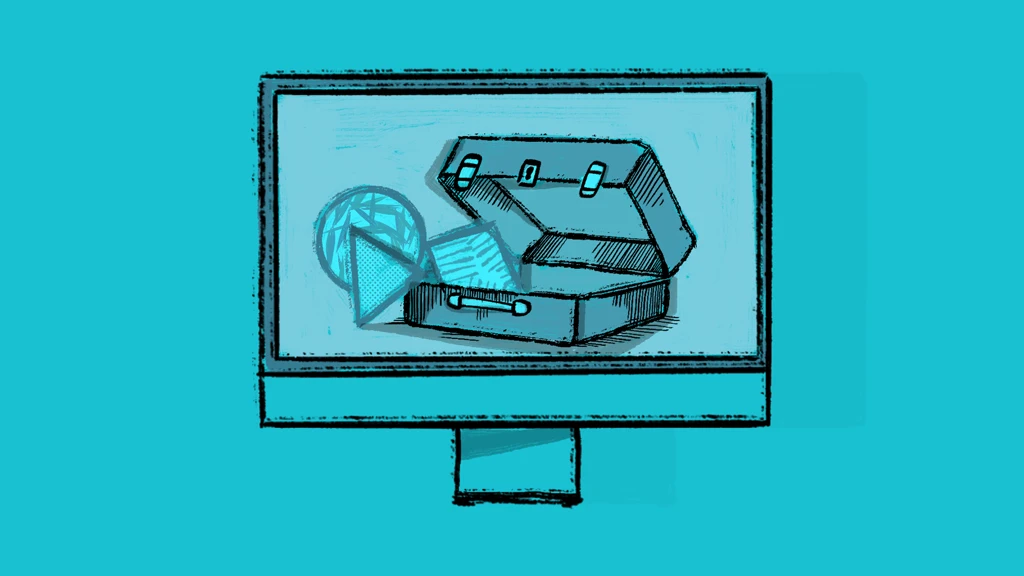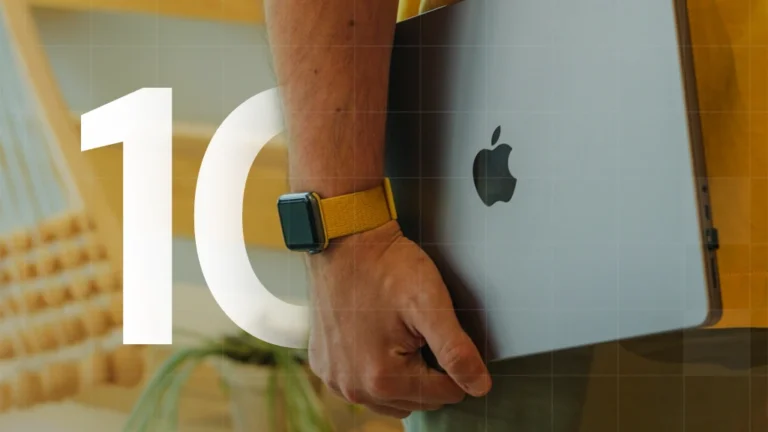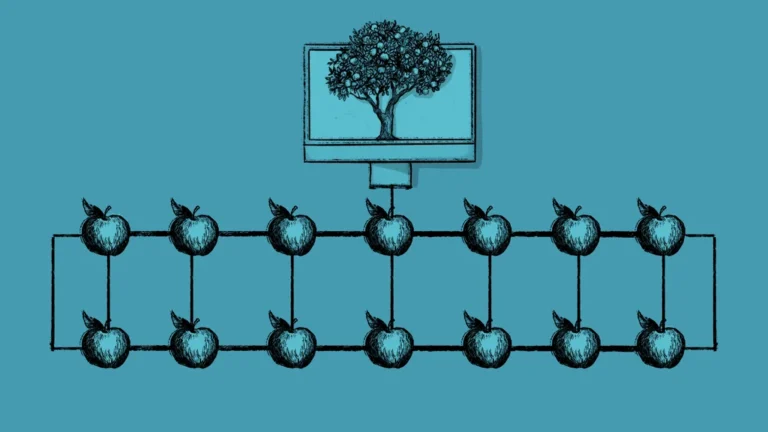MDM Policy: What Is It & How Can You Create One?
Businesses rely on mobile devices. These tools offer the flexibility, productivity, and efficiency organizations need to thrive. However, they also bring significant security and management challenges.
The good news is that Mobile Device Management (MDM) policies simplify device security for IT professionals. They also make management much more effective. Whether your organization uses Bring Your Own Device (BYOD) or issues company devices, mobile security is essential. A robust MDM policy ensures all endpoints remain secure, compliant, and productive.
In this article, you’ll learn what an MDM policy is and why it’s a must-have. You’ll also be guided through creating an MDM policy that aligns with your company’s specific needs—especially if you’re an IT administrator, security lead, or compliance professional managing Apple devices in education, healthcare, finance, or modern hybrid enterprises.
What is a Mobile Device Management (MDM) Policy?
MDM policies help organizations see and control their entire mobile ecosystem, including personal mobile devices and company-issued devices.
An MDM policy is a set of rules that controls how devices—like smartphones, tablets, and laptops—are configured, used, and secured at work. Done right, it helps businesses protect sensitive data and prevent data breaches. It also ensures ongoing compliance with evolving industry regulations.
While every organization’s MDM policy has unique details, they all should clearly spell out rules for data access, app usage, security protocols, and device configurations.
Why is MDM Policy Important for Organizations?
Addressing Security Risks
Mobile devices naturally increase an organization’s attack surface. More mobile devices mean your company is more vulnerable to threats. These include phishing attacks, malware, and unauthorized access.
According to Crowdstrike, 52% of vulnerabilities occur during initial access. This highlights the need to secure exposed systems early. The average cost of a data breach was $4.88 million in 2024, a 10% increase over the previous year. As you might imagine, costs are expected to keep rising.
An effective MDM policy reduces these risks and costs. It enforces security measures like mandatory encryption, antivirus installation, and secure authentication processes. It also empowers administrators with tools to remotely wipe lost or stolen devices, protecting sensitive company data.
BYOD Trends and Challenges
More organizations now allow employees to use personal devices for work (BYOD). Gartner found that 80% of business leaders have implemented or plan to implement BYOD for mobile devices. This improves flexibility and employee satisfaction. However, it also brings a whole new set of challenges, including inconsistent security, difficulty tracking devices, and a lack of oversight on sensitive data access.
MDM policies bridge this gap. While employees might be wary of employer management on personal devices, MDM policies and tools can reassure them. They enable you to secure personal mobile devices without compromising employee privacy or productivity.
Ensuring Data Protection and Compliance
Data protection and compliance regulations are growing rapidly. 80% of countries have laws like GDPR, SOX, CCPA, DORA, CPRA, and HIPAA in place or pending. In the US, many organizations must follow Center for Internet Security (CIS) Level 1 compliance benchmarks, as well as DISA STIG, CMMC, and NIST regulations.
It’s not surprising that Gartner predicted 75% of the world’s population would have its personal data covered under modern privacy regulations by 2024. An MDM policy ensures that all mobile devices adhere to these standards. This minimizes legal and financial risks.d consequences.
Legal & Compliance Considerations in MDM
MDM policies for managing mobile devices must account for local, industry-specific, and international data privacy and protection regulations. Best practice is to engage legal experts to ensure your MDM policies comply with relevant laws.
Here are some of the key legal frameworks:
| Regulation | Region | Key Points | MDM Impact |
| GDPR | EU | Consent for data, minimize collection, Right to be Forgotten, 72-hr breach notice, heavy fines | Use consent prompts, limit data, support deletion requests, plan for breaches |
| HIPAA | U.S. (Healthcare) | Privacy & security rules, protect ePHI, breach notifications | Enforce encryption, access control, audit logs |
| CCPA | California | Right to Know, delete, correct, opt-out of sales, applies to large businesses | Enable data access, deletion, opt-out settings |
6 Steps to Creating a Successful MDM Policy
- Assess Organizational Needs
Identify your business objectives, such as mobile device security, employee productivity, and compliance. Decide whether to include BYOD devices in the policy. Consider the types of applications your organization will allow employees to use and which ones will be managed. - Define Security Measures
Outline specific protocols. This includes requiring strong passwords and making Multi-Factor Authorization (MFA) non-negotiable. MFA is reported to prevent 99% of automated hacking attacks from being successful. Specify encryption and regular OS and app updates. Include rules for handling lost or stolen devices, such as remote wiping. Blacklist apps with known security gaps. Provide guidelines for using public Wi-Fi, like restricting access to pre-configured wireless access points.
- Establish Access Controls
Insider threats, whether malicious or accidental, are a significant cause of data breaches. The more people who have access to sensitive data, the more likely breaches become. Use role-based access controls (RBAC) to define which employees can access sensitive data. Limit access to corporate resources based on job functions and prevent unauthorized application downloads.
- Provide Clear BYOD Guidelines
Emphasize the importance of employee privacy. Proactively communicate how you will monitor and secure personal devices to address employee concerns. Specify which networks and apps (or app types) are acceptable. Explain how personal and work data will remain separate to maintain privacy.
- Train Employees on Adherence
Employees play a critical role in ensuring mobile device security and compliance. Provide regular training sessions on MDM compliance, data privacy, and sensitive data protection regulations. Teach them how to connect to secure Wi-Fi and how to recognize mobile device security threats, such as phishing and social engineering attempts.
- Use an MDM Solution
Invest in an advanced mobile device management (MDM) tool. This streamlines policy enforcement across laptops, smartphones, and tablets. It enables real-time device monitoring, automated security updates and fixes, and app usage control. Popular solutions include Addigy, Jamf, and Microsoft Intune.
Best Practices for Implementing MDM Policy
- Enforce Passcodes & MFA
Organizations must require strong passcodes, not just encourage them. Passcodes should have a minimum of 12 characters, including a mix of upper/lower-case letters, numbers, and symbols. They should avoid personal information or common words. Passcodes alone are not enough; you must also require Multi-Factor Authentication. MFA is reported to prevent 99% of automated hacking attacks from being successful. - Use Antivirus and Anti-Malware Software
Installing these programs is critical for defending against data breaches and safeguarding corporate data. Antivirus protects against known threats; anti-malware targets new and sophisticated attacks like ransomware and spyware. Regularly update the software to combat the latest threats. - Restrict Certain Actions
Block rooted (Android) or jailbroken (iOS) devices from accessing corporate resources. When devices are compromised, bad actors gain administrator-level access, bypassing built-in security. This makes devices highly susceptible to malware and unauthorized access. Check suspected devices and block confirmed compromised ones. - Limit Public Wi-Fi Usage
Public Wi-Fi networks are often unsecured, making data transmitted over them vulnerable. Mandating the use of Virtual Private Networks (VPNs) encrypts data traffic, providing a secure connection even on public networks. This protects sensitive information from unauthorized access. - Schedule Regular Backups
Without a sound backup strategy, you risk data loss and business halts. Regularly backing up data ensures information can be recovered in case of device loss/theft, hardware failures, or human errors. Use automated solutions for backing up data to secure cloud storage to minimize data loss risks and safeguard business continuity.
Common Pitfalls to Avoid - Overcomplicating policies with overly technical language.
- Ignoring feedback from employees.
- Failing to regularly audit and update MDM policies.
Continuous Education on MDM
The digital landscape is always changing. Educate employees about evolving security protocols, new MDM features, and potential threats to ensure compliance.
- Awareness of Emerging Threats
Cybersecurity threats are continually increasing in both frequency and sophistication. Conduct regular training on the latest attacks and how to avoid them. Educate employees about potential risks such as malware, mishing (phishing attacks targeting mobile users), smishing (via SMS), quishing (via QR codes), and vishing (voice calls). Fostering security awareness makes employees the first line of defense. - Updates on Compliance Requirements
Regulatory standards like GDPR and HIPAA frequently update. Continuous education ensures staff are aware of these changes. They’ll understand how to maintain compliance through proper device management and data handling practices. - Utilization of MDM Features
Comprehensive MDM solutions offer a range of features beyond basic device management, including application control and remote wipe. To maximize your MDM investment, make sure everybody stays updated on capabilities. - Feedback and Continuous Improvement
Encourage feedback from users regarding MDM policies and training programs. A continuous feedback loop provides insights into areas needing improvement and helps tailor future training sessions.
Trends Influencing MDM
| Trend | Description | MDM Implication |
| AI & Machine Learning | AI and ML are transforming MDM into more adaptive, intelligent systems. These technologies allow predictive analytics and automation to proactively address threats and enforce policies. | – Anticipates security breaches via behavioral analysis – Automates compliance enforcement across devices – Enables advanced authentication through behavioral biometrics |
| Zero Trust Security | Based on the principle “never trust, always verify,” Zero Trust models require continuous validation of both users and devices, regardless of network or location. | – Real-time user and device authentication- Integration with identity management for granular access- Rapid response to threats via device isolation or data wipe |
| Regulatory Changes | Global shifts in data privacy laws and sector-specific regulations are forcing organizations to constantly reevaluate their compliance strategies. | – MDM helps enforce evolving regulations like GDPR and CCPA- Must adapt to new laws such as proposed privacy torts- Supports compliance with HIPAA, GLBA, and DORA through controls and reporting tools |
Preparing for Tomorrow’s Challenges
Businesses that implement scalable Mobile Device Management (MDM) solutions and prioritize continuous training for both IT administrators and employees will not only improve compliance and security—avoiding costly penalties and business interruptions—but also enhance their operational resilience and competitive advantage.
- Embracing Scalable MDM Solutions:
- Cloud-Based Flexibility: Cloud-based MDM platforms are ideal for scalability. Businesses can leverage advanced MDM solutions to manage geographically distributed devices and users without significant infrastructure investments or overburdening IT teams.
- Agentic MDM Approaches: Modern MDM solutions, like Agentic MDM, utilize AI-driven automation and real-time data synchronization. This manages devices efficiently, ensuring data integrity and consistency across the enterprise.
- Outsourcing MDM Services: Organizations with limited IT resources should consider outsourcing mobile device management to MSPs and other IT services companies with expertise in MDM solutions and strategies.
- Continuous Training for IT Administrators and Employees:
- Regular Training Programs: Keep IT admins and end-users updated on MDM technologies, advances, and best practices. .
- Employee Awareness: To ensure compliance, organizations must instill a culture of security awareness. Educating employees about MDM policies and security protocols reduces the risk of security breaches due to human error.
- Taking Advantage of Technological Advances: Continuous learning is critical for helping IT staff and employees effectively leverage new tools and processes so your organization can remain agile.
Optimize Your Mobile Security With a Strong MDM Policy
Creating and implementing an effective MDM policy isn’t just about securing employees’ personal mobile devices and corporate-owned smartphones, laptops, and tablets. It’s about giving your employees the tools they need to work smarter, safer, and more productively, wherever they’re located.
Need help managing your Apple devices or building an effective policy? Explore Addigy’s MDM solutions today to simplify the process and achieve peace of mind.






